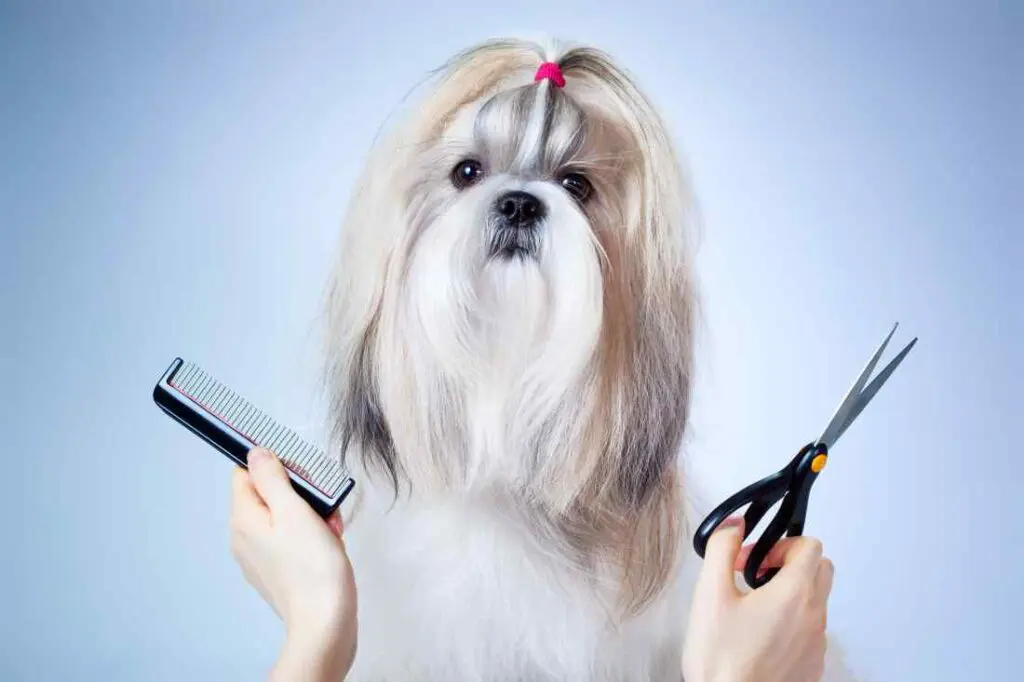Embarking on grooming your dog can seem daunting. Yet, with the right tools and some basic knowledge, you can keep your dog healthy and looking their best. Here’s how to get started with how to groom a dog at home and essential dog grooming tips, from choosing the right supplies to establishing a simple, effective grooming routine.
Choosing the Right Grooming Supplies
Select grooming tools tailored to your dog’s coat type—slicker brushes for long-haired breeds and bristle brushes for short-haired ones. Consider breed-specific needs, like specialized clippers for intricate haircuts in poodles. Always prioritize safety, using blunt-edged scissors for sensitive areas and opting for pet-safe grooming products to avoid irritation.
Establishing a Grooming Routine
Consistency is key. Set aside time each week for grooming to maintain your dog’s coat, nails, and hygiene. Regular brushing helps prevent matting and remove loose fur, while nail trimming keeps your dog comfortable on walks. Use a gentle dog shampoo for baths, and don’t forget to check ears and brush teeth to uphold overall well-being.
Brushing Your Dog’s Coat
After establishing a grooming routine for your dog, the next essential step is properly brushing their coat to maintain its health and appearance. To ensure you are brushing your dog’s coat effectively, follow these steps:
Detangling Mats:
- Begin by using a Gently use a slicker brush on mats or tangles, starting at the ends and moving toward the skin to avoid discomfort.
- If the mats are too severe, consider using a detangling spray, or seek professional help to prevent causing your dog pain.
Proper Shedding Techniques:
- Use an undercoat rake or de-shedding tool to remove loose fur and reduce shedding. Brush in the direction of hair growth to effectively capture loose hairs.
- Regularly brush your dog’s coat to prevent excessive shedding and keep their fur healthy and shiny. Remember to reward your pup for their patience during grooming sessions.
Bathing and Drying Techniques
For effective grooming, ensure you have the necessary supplies ready before bathing your dog, such as dog shampoo, towels, and a non-slip mat. Begin by gently wetting your dog’s coat with lukewarm water, avoiding the eyes and ears. Apply a dog-specific shampoo, lather it well, and rinse thoroughly to prevent skin irritation. After rinsing, you can opt to use a coat conditioning treatment to keep your dog’s fur healthy and shiny.
After the bath, dry your furry friend. Start by towel drying your dog, and gently patting the coat until most of the moisture is absorbed. If your dog has long or easily tangled fur, consider using a detangling spray to make brushing easier. Next, you can choose to blow dry your dog in a low-heat setting. Keep the dryer moving to avoid overheating one spot.
Remember to keep the drying experience positive for your dog by using treats and praise throughout the process. Following these steps will leave your pup clean, fresh, and looking their best!
Nail Trimming and Ear Cleaning
Ensure you have the necessary tools like a dog nail clipper and ear cleaning solution ready to maintain your dog’s hygiene effectively. Here’s how to trim your dog’s nails and clean their ears properly:
Nail Trimming:
- Begin by holding your dog’s paw gently but securely.
- Trim the tip of the nail at a slight angle, avoiding the quick (the pink area inside the nail).
Ear Cleaning:
- Check your dog’s ears for redness, swelling, or a bad odor before cleaning.
- Moisten a cotton ball with an ear cleaning solution recommended by your veterinarian and gently wipe the visible part of the inner ear.
Proper Technique: When trimming nails, make small cuts to avoid cutting them quickly. For ear cleaning, never insert anything deep into the ear canal to prevent injury.
Safety Precautions: Be cautious while trimming nails to avoid cutting quickly, which can cause bleeding and discomfort. When cleaning ears, ensure your dog is calm and gentle to prevent accidental injury.
Frequently Asked Questions
Can Grooming Help Prevent Certain Health Issues in Dogs?
Regular grooming can help prevent skin conditions and allergies in dogs. Brushing, bathing, and trimming your dog’s coat reduces the risk of infections and irritation. It also promotes healthy skin and a shiny coat, contributing to your dog’s overall well-being.
Are There Any Specialized Grooming Techniques for Different Dog Breeds?
When it comes to breed-specific grooming, it’s important to tailor your approach to meet the unique needs of different dog breeds. Each breed may require specific coat maintenance techniques to keep its fur healthy and looking its best.
How Often Should I Take My Dog to a Professional Groomer?
For DIY grooming, consider taking your furry friend to a professional groomer every 4-6 weeks. This frequency helps maintain your dog’s coat health and cleanliness. Bond with your pup by learning basic grooming tasks in between visits.
What Should I Do if My Dog Becomes Anxious or Scared During Grooming?
If your dog feels anxious or scared during grooming, try calming techniques like gentle massage or soothing music. Gradual desensitization training can also help. If the anxiety persists, consider seeking professional help or discussing medication options with your vet.
Are There Any Alternative Grooming Methods for Dogs With Sensitive Skin or Allergies?
When grooming a dog with sensitive skin or allergies, consider using hypoallergenic products. Natural remedies like oatmeal baths can help soothe irritated skin. Always test products first and consult your vet for advice on alternative grooming methods.
Conclusion
Congratulations on taking the first step in grooming your dog! Remember to choose the right grooming supplies, establish a routine, brush your dog’s coat regularly, use proper bathing and drying techniques, trim their nails, and clean their ears. With patience and practice, you’ll become more confident in grooming your furry friend. Keep up the good work and enjoy bonding with your dog through this essential care routine. Happy grooming!

